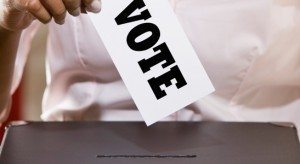Mark Twain said, “History doesn’t repeat itself, but it often rhymes.” Will this be the case for our new administration?
President Trump has outlined his pro-growth initiatives to stimulate the economy, and he has clearly taken a page out of former President Ronald Reagan’s play book. Reagan’s campaign focused on fiscal stimulus, lower taxes, less government interference (regulation) and a strong national defense—a platform termed Reaganomics. In November 2016, I heard this storyline again, only this time it was called Trumponomics.
While these actions worked to stimulate the economy during Reagan’s administration, will they produce the same kind of results this time around? And if they don’t, what does that mean for our economy?
While history may not repeat itself as Twain said, we don’t think it will rhyme either in today’s very different economic environment.
A look back—fiscal stimulus in the 1980s
Several important acts passed by the Reagan administration in the 1980s worked quite effectively, beginning with the Economic Recovery Tax Act of 1981, which lowered the top marginal tax bracket from 70 percent to 50 percent. The Job Training Partnership Act of 1982 was signed into law next, creating the first public private partnerships in order to create jobs. In 1986, Reagan launched the Tax Reform Act, simplifying the tax code.
Reagonomics’ resolution—intended and unintended
There’s no question there were some positive economic results during Reagan’s administration. Unemployment declined from a peak of 10.8 percent in 1982 to 5.4 percent when he left office. Real gross domestic product (GDP) averaged 3.5 percent during his presidency with a high of 9.4 percent in 1983.
However, there was a byproduct of all this as well—the national debt. The U.S. debt nearly tripled from $997 billion to $2.85 trillion.
Déjà vu? Not quite—the new plot thickens
At this time we don’t know exactly how Trumponomics will play out, but I do have a sense of déjà vu. The material difference to their platforms is that we are not at the same stage of the economic cycle, so the results may be very different. Unlike the Reagan era, we are not coming out of a recession, just the opposite—we are late in the economic cycle. Key differences include:
Unemployment rate
- When Reagan took office, the unemployment rate was 7.5 percent and by 1982 it peaked at 10.8 percent.
- Today the unemployment rate stands at 4.8 percent and appears to be headed lower, or at least stabilizing.
Interest rates
- Interest rates peaked in 1981, with long-term rates hitting 15.8 percent. And as inflation was breaking down, interest rates lowered quickly.
- Today, long-term interest rates are 2.5 percent and headed higher, with inflation being virtually non-existent.
Free trade and immigration
- Reagan was for free trade and immigration. In the early 1980s, there was a surge in immigration, which helped support labor force growth.
- Trump is for fair-free trade and controlled immigration, which means we could see less immigration under the Trump program.
Factual foreshadowing
Let’s assume that some of Trump’s plans are executed in 2017. Will they translate into significantly faster economic growth? Probably not. The reality is, even with all the positive items that occurred with Reagan’s fiscal stimulus, Reaganomics did not produce an overwhelming boom for the economy.
Economic epilogue
However, all this being said, we do suggest that fiscal stimulus will be beneficial for the U.S. economy in 2017, and that economic growth will accelerate to 2.5 percent, up from 1.6 percent in 2016. The Fed’s forecast is slightly more conservative at 2.1 percent real GDP in 2017.
One item to remember is that it’s still early; we are not certain what Trump and his administration will accomplish. However, if he is successful in implementing many of his initiatives, we may have higher interest rates, an increase in inflation and continued strength in the dollar. We are confident we will also experience an improvement in economic activity.




